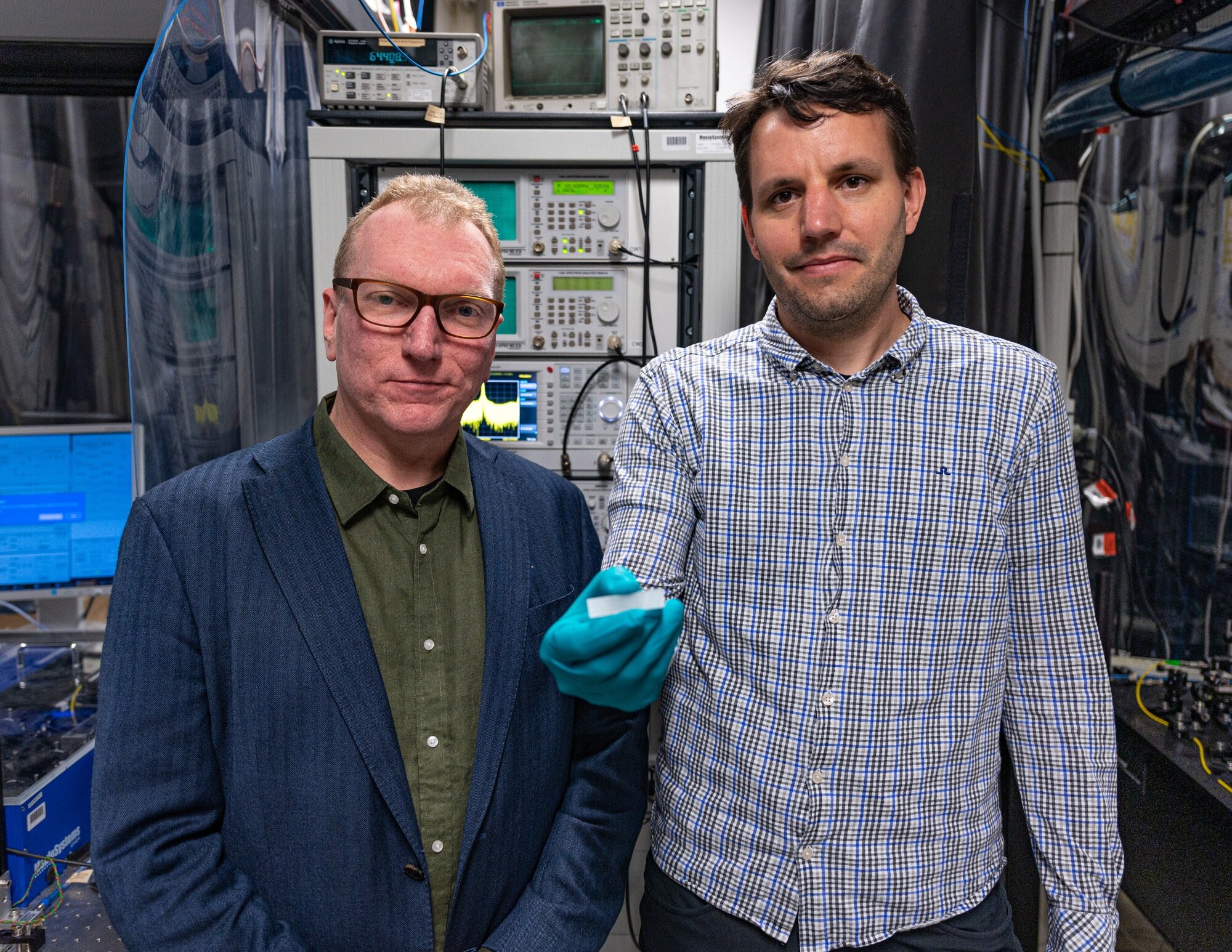Manufacturing advances bring material back in vogue
One of the world’s most important artificial materials is back in vogue because scientists are harnessing its properties for new and diverse future applications such as space navigation and farming.
The University of Adelaide’s Dr. Andy Boes and RMIT University’s Distinguished Professor Arnan Mitchell are leaders in developing lithium niobate (LN) to harness its exceptional properties in photonic chips.
“Lithium niobate has new uses in the field of photonics—the science and technology of light—because unlike other materials it can generate and manipulate electro-magnetic (EM) waves across the full spectrum of light, from microwave to UV frequencies,” said Dr. Boes.
“Silicon was the material of choice for electronic circuits, but its limitations have become increasingly apparent in photonics. LN has come back into vogue because of its superior capabilities and advances in manufacturing mean that LN is now readily available as thin films on semiconductor wafers.”
A layer of LN about 100 times thinner than a human hair, is placed on a semiconductor wafer/substrate. Photonic circuits are printed into the LN layer which are tailored according to the chip’s intended use. A hundred different circuits may be contained inside a chip the size of a fingernail.
“The ability to manufacture integrated photonic chips from LN will have major impact on applications in technology that use every part of the spectrum of light.” said Distinguished Professor Mitchell.
“Photonic chips can now transform industries well beyond optical fiber communications.”
As there is no GPS on the Moon navigation systems in lunar rovers of the future need to use an alternative system, which is where photonic chips come in. By detecting signals in the infrared part of the spectrum a photonic chip with a laser pointed at it can measure movement without needing external signals.
Dr. Boes and Distinguished Professor Mitchell brought together a team of world leaders in LN and published their review of LN’s capabilities and its potential future applications in the journal Science.
Closer to home LN technology can be used to detect how ripe fruit is. Gas emitted by ripe fruit is absorbed by light in the mid-infrared part of the spectrum. A drone hovering in an orchard would transmit light to another which would sense the degree to which the light is absorbed and when fruit is ready for harvesting. Such a system has advantages over existing technology by being smaller, easily deployed and potentially giving more information in real time to farmers.
LN was first discovered in 1949 and has been used in photonics since then but only now are these advances being realized.
“We have the technology to manufacture these chips in Australia and we have the industries that will use them,” said Distinguished Professor Mitchell.
“This is not science fiction it’s happening now and competition to harness the potential of LN photonic technology is heating up.”
More information:
Andreas Boes et al, Lithium niobate photonics: Unlocking the electromagnetic spectrum, Science (2023). DOI: 10.1126/science.abj4396
Citation:
Manufacturing advances bring material back in vogue (2023, January 20)
retrieved 20 January 2023
from https://techxplore.com/news/2023-01-advances-material-vogue.html
This document is subject to copyright. Apart from any fair dealing for the purpose of private study or research, no
part may be reproduced without the written permission. The content is provided for information purposes only.
For all the latest Technology News Click Here
For the latest news and updates, follow us on Google News.

